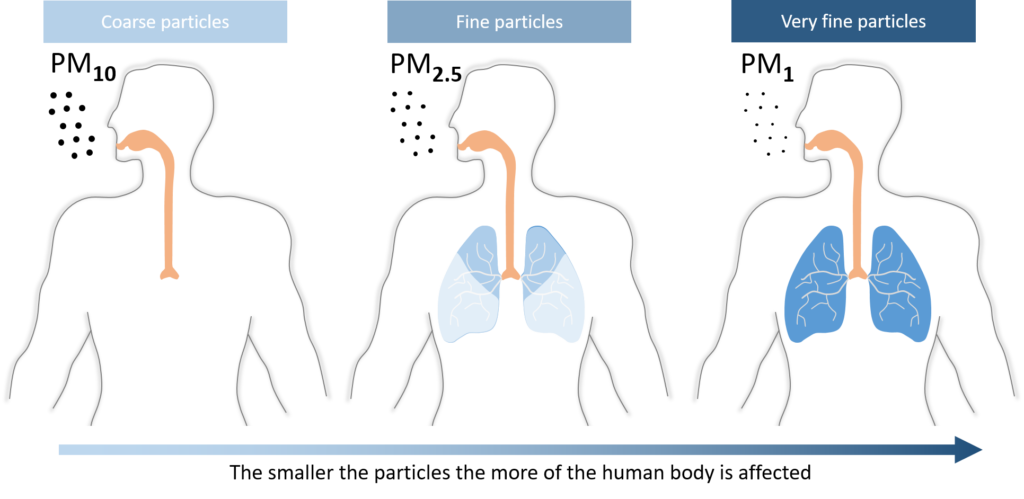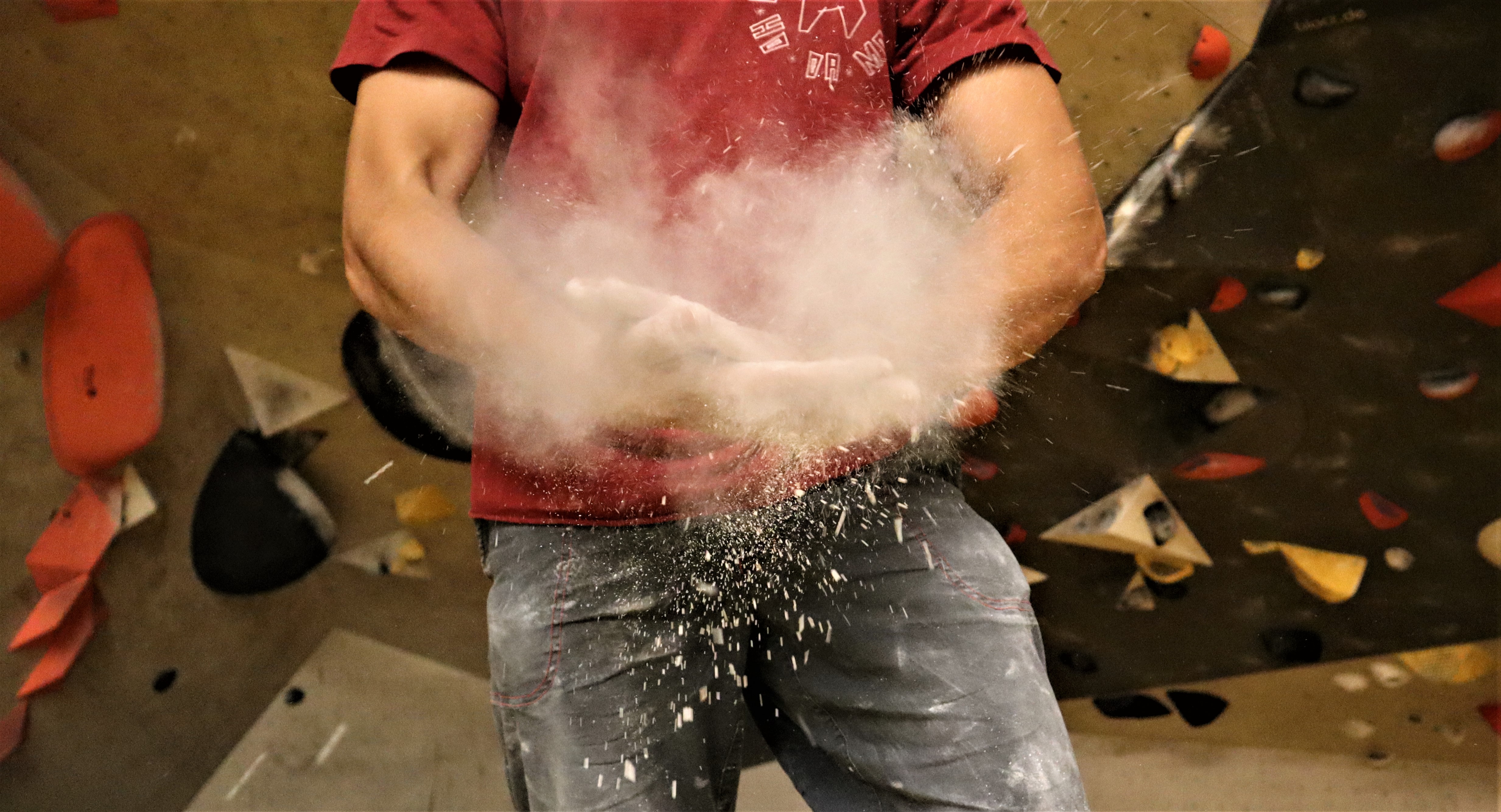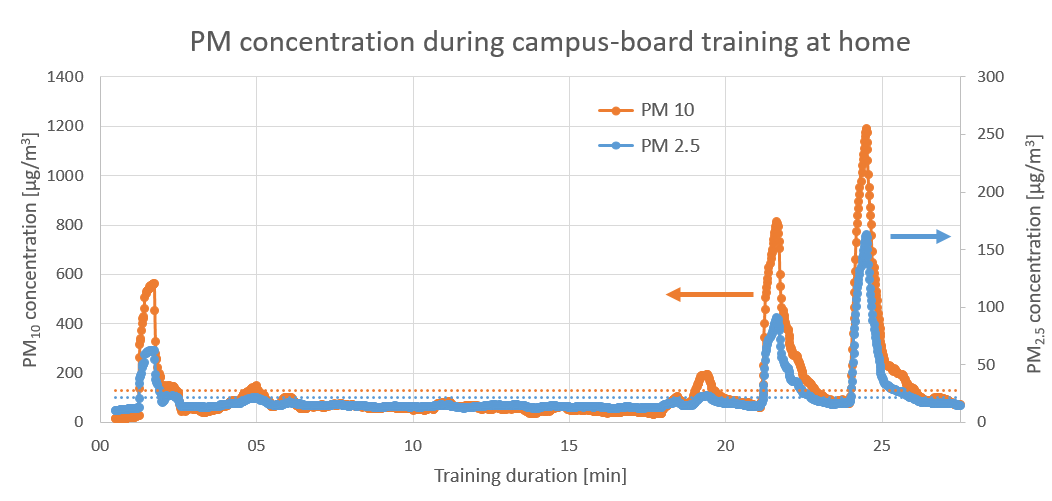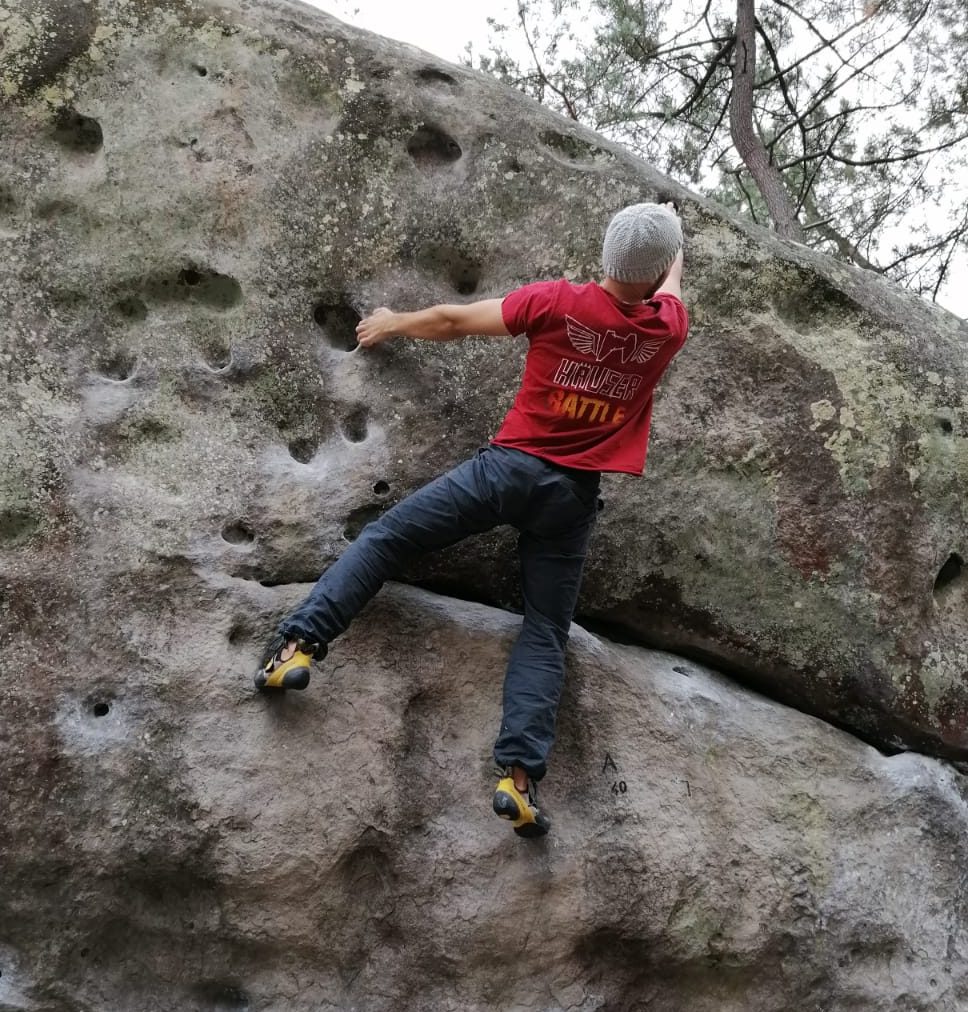It is common to use chalk (magnesia alba) in any kind of sport where hand grip is essential, such as in climbing or bouldering. As often heard in the gym:
“Bouldering is on the one hand proper cleaning of the route, on the other hand using sufficient chalk.”
But are there negative effects of this magical powder? Due to e.g. an inevitable (or in fact evitable) dust exposure? Let’s look into this!
This article is structured as follows:
Enjoy and share your thoughts in the comments!
Executive Summary
The effect of particulate matter (dust) on human health
Obviously, air quality depends on various contaminants, particulate matter (PM) being just one of them. Nevertheless, considering all toxic substances would go beyond the scope of this blog article. Additionally, the most obvious pollutant in climbing gyms is dust, hence I will only focus on this topic.
Size-dependent deposition of particles in the human body
There are numerous regulatory guidelines for fine dust varying from country to country. Some examples (with corresponding limits in brackets) are:
- the occupational exposure limits for respirable (1.25 mg/m3) and inhalable (4 mg/m3) dust,1
- the maximum dust concentration (300 µg/m3) at any workplace in Germany.2
These limitations are, however, valid to various ranges of dust sizes. For a better comparison, researchers use a nomenclature for PM depending on its size (aerodynamic diameter): Particles smaller or equal to XY µm are denoted by PMXY, with the most cited ones being PM2.5 & PM10.
Just to give you an idea how small these particles are: The diameter of human hair is in the range of (50-70) µm. Depending on its size, PM can penetrate to different parts of the human body, as demonstrated on Figure 1: The smaller the particles, the higher their impact on the human respiratory system. Ultra-fine particles with a diameter smaller than 0.1 µm can theoretically even get to the blood stream. The latter knowledge is mainly based, however, on computer simulations.3

Health Standards
The World Health Organization (WHO) published two outdoor air quality guidelines for PM10 concentration.4 They have also found no difference in the hazardous nature of indoor and outdoor particulate matter pollution.5 Hence, these health standards could be also applied for indoor activities:
- The annual average must not exceed 40 μg/m³.
- The daily average should not exceed 50 μg/m³, except for maximum 35 times per year.
And these limits should be taken seriously. The WHO has set an even lower interim target for PM10 of 20 µg/m³ (and half of that for PM2.5) for the yearly average, because this could reduce air pollution-related deaths by ~15%. Moreover, a complete reduction of PM pollution would lead to a – with 8.6 months – prolonged life-time expectation.6 Interestingly, long-term exposure to PM2.5 is more severe, than the addition of multiple short-term events.7
But what happens, when these limits are exceeded? A lot of research worldwide gave us insight into this topic revealing physiological effects and biological mechanisms triggered by short- or long-term PM2.5 exposure. Desert dust for example can cause cardiovascular disorders, while the combustion of wood or oil can additionally result in respiratory health issues.7 It is important to mention that it is difficult to determine the exact composition of PM, as there are huge differences in its spatial and temporal composition. Furthermore, it is not exactly clarified how a given chemical composition affects various adverse health reactions.8 Nevertheless, averaged PM exposure can be used as a general indicator to consider adverse health effects.8
Particulate matter /chalk in climbing gyms
Researchers at the university of Darmstadt, Germany has published a few interesting studies about PM concentration in climbing gyms.9,10 They argue, that since:
- there is barely no data available about how chalk alters health and
- magnesia alba is not solvable even at 100% relative humidity
PM resulting from chalk can be just considered as size-dependent dust when it comes to adverse health effects.

The researchers measured PM1, PM2.5 and PM10 values at a height of (1.5-1.8) m and found out that the PM concentration is strongly correlated with the number of persons in the gym. During periods of high activity, PM10 values in the range of (1-4) mg/m3 can be reached. In daily average this corresponds to a concentration of (200-500) µg/m3. High values are mainly explained by the excessive use of chalk, but can also originate from climbing shoe or rope abrasion.9
So what does this mean for your average exposure to dust? Check out the calculator on the right:
A direct correlation with guideline values given by the WHO is not straight forward due to the particle size distribution for different dust sources. Nevertheless, these values are very high and we should thus try to avoid such exposures in climbing gyms. Luckily, there are some options:10
- Sufficient air ventilation either through a modern air filtration system or regular opening of enough windows. This can result in a dust reduction of (45‑60) %.
- The usage of liquid chalk can reduce the dust concentration as much as if no chalk was used at all. However, potential adverse effects of ethanol (solvent in liquid chalk) on the skin can be detrimental. All other kinds of magnesia results in a similarly high PM concentration.
Particulate matter at home: Measured values during a workout
Another option would be of course to reduce the number of participants and train at home on a self-made wall. Out of curiosity, I tried this out on my self-made campus-board and measured the PM2.5 & PM10 concentrations with a self-made, Arduino based dust sensor system. The results are summarized in Figure 3.

It is not to oversee when exactly I grabbed into my chalk-bag to have a better grip. During a short, 30 min session, the PM10 value had an average of ~130µg/m3, which I consider quite high. So from this time point on, I started to train with liquid chalk only, or with the windows open at home. You should maybe consider this too.
Final remarks:
- In this article I only consider indoor facilities. Climbing outdoors will probably not result in such high PM concentrations.
- By the way: magnesia alba is not only used in climbing, but at other facilities too, such as fitness centres, gymnasiums, and sports halls. Check out some further reading if you are interested.11–14
Bibliography
1. Bundesanstalt für Arbeitsschutz und Arbeitsmedizin. (2014) Allgemeiner Staubgrenzwert:1–4. https://www.baua.de/DE/Angebote/Rechtstexte-und-Technische-Regeln/Regelwerk/TRGS/pdf/900/900-allgemeiner-staubgrenzwert.pdf?__blob=publicationFile&v=2.
2. DFG. (2021) MAK- und BAT-Werte-Liste 2021: Maximale Arbeitsplatzkonzentrationen und Biologische Arbeitsstofftoleranzwerte. https://series.publisso.de/sites/default/files/documents/series/mak/lmbv/Vol2021/Iss1/Doc001/mbwl_2021_deu.pdf.
3. DANEL Vincent. (2021) Airborne particulate matter and their health effects. Encycl Environ.
https://www.encyclopedie-environnement.org/en/health/airborne-particulate-health-effects/.
4. European Comission. Air Quality Standards n.d. https://ec.europa.eu/environment/air/quality/standards.htm.
5. WHO. (2010) WHO Guidelines for Indoor Air Quality: Selected Pollutants.
7. Europe WRO for. (2013) Review of evidence on health aspects of air pollution – REVIHAAP Project.
8. WHO. (2005) Air Quality Guidelines, Global Update.
9. Weinbruch S, Dirsch T, Ebert M, Hofmann H, Kandler K. (2008) Dust exposure in indoor climbing halls. J Environ Monit 10:648.
10. Weinbruch S, Dirsch T, Kandler K, Ebert M, Heimburger G, Hohenwarter F. (2012) Reducing dust exposure in indoor climbing gyms. J Environ Monit 14:2114.
11. Salonen H, Salthammer T, Morawska L. (2020) Human exposure to air contaminants in sports environments. Indoor Air 30:1109–29.
12. Oliveira M, Slezakova K, Delerue-Matos C, Pereira MC, Morais S. (2019) Children environmental exposure to particulate matter and polycyclic aromatic hydrocarbons and biomonitoring in school environments: A review on indoor and outdoor exposure levels, major sources and health impacts. Environ Int 124:180–204.
13. Slezakova K, de Oliveira Fernandes E, Pereira M do C. (2019) Assessment of ultrafine particles in primary schools: Emphasis on different indoor microenvironments. Environ Pollut 246:885–95.
14. Slezakova K, Peixoto C, Pereira M do C, Morais S. (2018) Indoor air quality in health clubs: Impact of occupancy and type of performed activities on exposure levels. J Hazard Mater 359:56–66.

My name is Vincent and I want to share my climbing & general outdoor experience with you. If you have any comments or questions do not hesitate to contact me!


Very good informations!!!! I like it a lot!
Thanks a lot Anna!